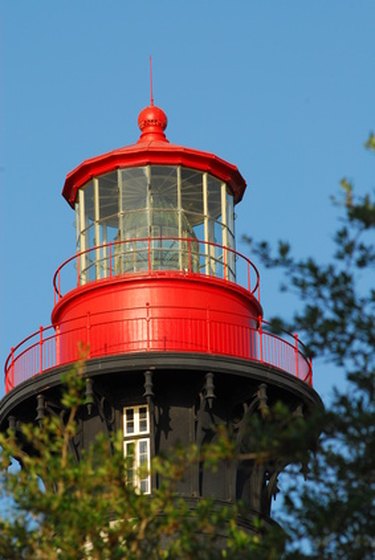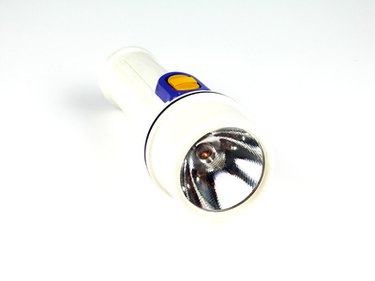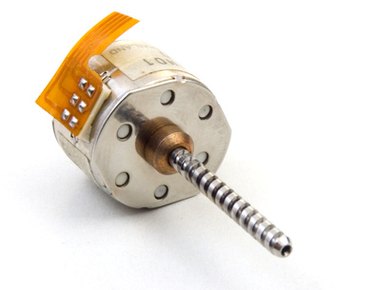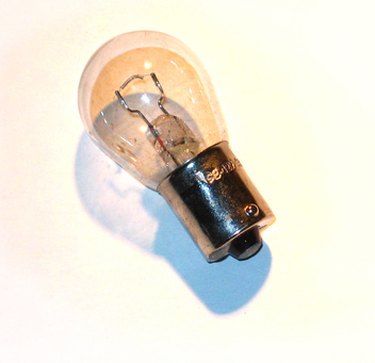Things You'll Need
Three-Watt flashlight bulb
Bulb socket, screw-in or push-in
Truncated flashlight reflector
Large gear, 1 inch to 2 inch diameter
DC motor with geared driveshaft
Power supply for bulb and motor
Optional lens
Optional filter

Whether making your own lighthouse or creating the perfect atmosphere for that 1980's disco party, a revolving light might be just the thing. Building a 1000-watt beacon visible to ships at sea for miles around may not be a reasonable target, but a tabletop rotating beam can be built from inexpensive parts. No matter the size, it's usually most efficient to have the light source stationary and rotate a mirror, a lens, or both, to create the rotation.
Step 1
Mount the socket on a fixed post and position the gear around the fixed post. The socket can be bonded on a machine screw or bolt, attached to a wooden dowel or friction fit inside a plastic dowel. Simply slip the gear over the mounting post.
Video of the Day
Step 2

Mount the truncated reflector vertically, attached to the large diameter gear, pointing towards the axis of the gear. The finished assembly should have the bulb socket at the vertical center of the reflector and the open side of the reflector should be facing the bulb. The reflector can be screwed into an angle bracket, bolted into a bent piece of sheet metal or even screwed into a wooden block.
Step 3

Mount the DC motor so that its gear interlocks with the reflector-mounted gear. Some DC motors have built-in tapped holes for mounting or use an appropriate motor mounting bracket.
Step 4

Insert a bulb in the socket on the mounting post assembled in Step 1.
Step 5
Connect the wires from the bulb socket and the DC motor to the terminals on the power supply.
Step 6
If a more focused beam is needed, mount a lens to the gear, opposite the reflector. If a colored beam is wanted, a gelatin filter can also be mounted opposite the reflector. The mount can be plastic, sheet metal, wood and the lens can be mounted with a retaining ring, mounting clips or adhesive.
Tip
Although a full reflector works, a truncated reflector (with "slices" taken from the top and bottom) lets the lens be positioned closer to the center of the reflector without interfering with the rotation.
Although there is a certain joy to constructing homemade assemblies, rotating beams ranging from those suitable for limited indoor use to assemblies rugged enough for continuous outdoor use are commercially available.
Warning
Make sure the motor torque rating will handle the load of the reflector and lens, if used.
Video of the Day